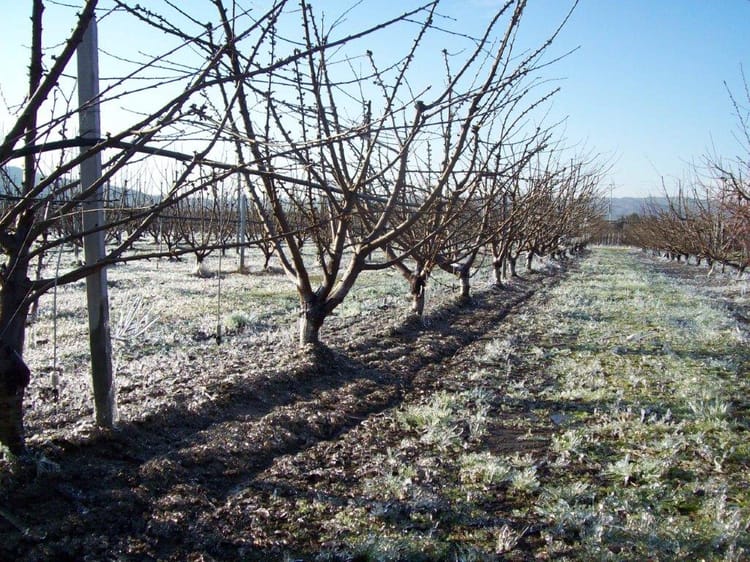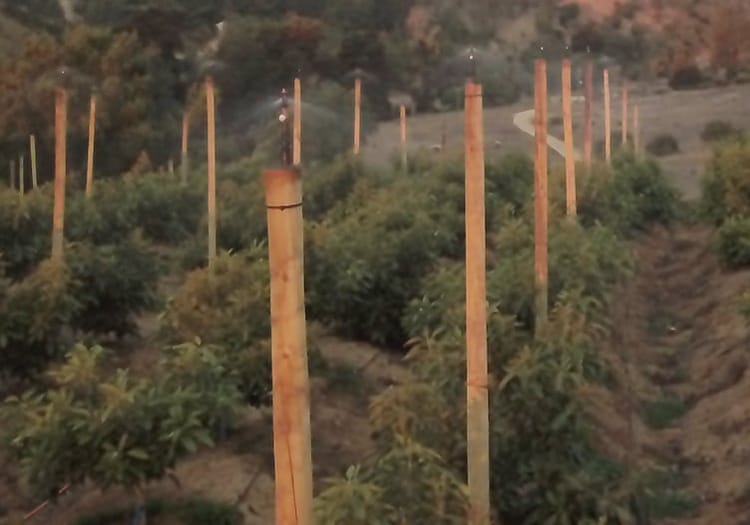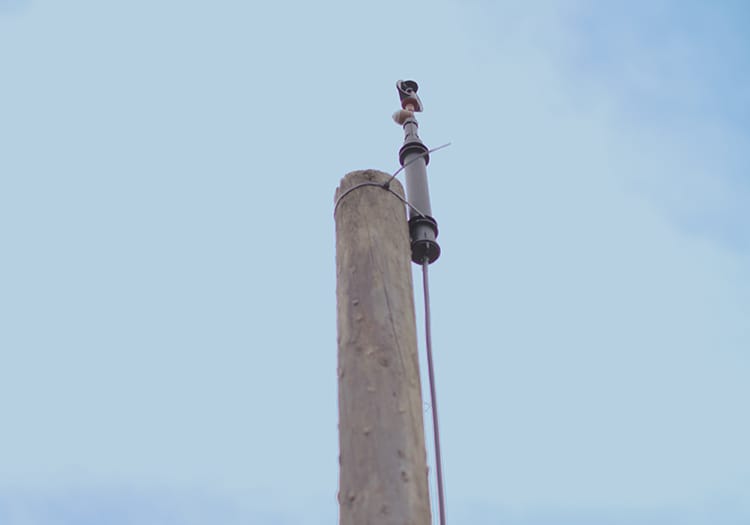What is a targeted frost protection sprinkler system?
Frost protection using sprinklers requires the system to apply a consistent layer of water on the crop during the entire frost event until temperatures are back to safe levels.
Unlike irrigation systems that can irrigate different plots in shifts, frost protection systems need to cover the entire orchard while maintaining a high flow rate. This results in high system costs, especially from pumping, head control and mainlines. This is where targeted water application rather than full coverage can make a huge difference.
To achieve cost-effective protection, it is advised to design the system in a way that sprinklers are only applying water on the trees and not between the crop rows. For example, if the canopy area covers only 50 percent of the total surface, as in a vineyard, and the sprinklers apply water only on the canopy and not on bare ground, for an application rate of 5mm/hour required for good protection, the system main line will only need to deliver 2.5mm/hour. This will reduce the system cost by 30-40% compared to a full coverage sprinkler system.





